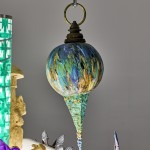
- |
- Arancio Salvatore |
- Blaquart Benjamin |
- Bycroft Madison |
- Carluy Baptiste |
- Chabal Marielle |
- Charles Laurie |
- Chetwynd Monster |
- Degorce-Dumas Emile |
- Dejode Sophie |
- Emine Raphaël |
- Grantina Daiga |
- Guruceaga Amandine |
- Hervé Louise |
- Lacombe Bertrand |
- Lajard Jessica |
- Ledeunff Laurent |
- Lopez Rafaela |
- Magot Benjamin |
- Maguet Arnaud |
- Maillet Clovis |
- Masson Baptiste |
- Molinéro Anita |
- Peinado Bruno |
- Perreard David |
- Peytavin Réjean |
- Pinaud Pascal |
- Rao Shanta |
- Rodriguez Sanmartin Omar |
- Sauvage Ludovic |
- Scoccimaro Lionel |
La Station - Nice - France
From 11-20-2021 to 08-01-2022
Opening informations : opening on Friday, november 19th at 6 PM
A project by Rafaela Lopez, Baptiste Masson and David Perreard.
with videos by Benjamin Blaquart, Laurie Charles, Monster Chetwynd, Louise Hervé & Clovis Maillet, Rafaela Lopez / Baptiste Masson / David Perreard, Benjamin Magot, Arnaud Maguet.
with sculptures by Salvatore Arancio, Madison Bycroft, Baptiste Carluy, Marielle Chabal, Emile Degorce-Dumas, Sophie Dejode & Bertrand Lacombe, Raphael Emine, Daiga Grantina, Amandine Guruceaga, Jessica Lajard, Laurent Ledeunff, Rafaela Lopez, Baptiste Masson & David Perreard, Anita Molinero, Bruno Peinado, Réjean Peytavin, Pascal Pinaud, Shanta Rao, Omar Rodriguez Sanmartin, Ludovic Sauvage, Lionel Scoccimaro.
Production Ars Ultima, Art-O-rama, Circa Project, DRAC IDF, DRAC PACA, EMMA, Labor Zero Labor, Mécènes du Sud (Montpellier-Sète), Villa Arson.
Initiated in 2016, this televisual-type series consists in 7 episodes: drawing its inspiration from the exquisite corpse game, each video is made by a different guest artist who can read the scenarios of the previous episodes but cannot see their images. The production means and the shooting locations change with every episode, only the actors remain the same.
In each episodes sculptures appear, made by approximately twenty visual artists, hiding the « wave filters » offered by a traveling salesmen group following the orders of a mysterious telephonic voice.
La Station presents SAGA in the form of an immersive installation, reuniting the seven videos and the totality of the sculptures related to the project. Specifically designed for La Station, the installation extends the atmosphere of the series: surrounded by the sculptures, the public, sat on an heptagonal and illuminated structure, can see all the video works.
This exhibition received the support of the Région Sud P.A.C.A.
This exhibition’ scenography has mainly been realized with recycled materials with Callia Fabrique Eco-Lab’ support.
•••
SAGA OR THE STUTTERING OF THE SERIAL
Patrice Blouin
ESCAPE FROM SODOM
To start, I think it would be good to read a poem of the great Russian poet Anna Akhmatova. This poem is entitled Lot’s Wife, it is dated 1924. It rewrites a famous passage from Genesis where righteous Lot escapes from Sodom with his family before the destruction of the city. The angels, who informed them, ordered them to not turn around in their escape. But Lot’s wife cannot resist temptation. She turns around and immediately turns into a pillar of salt.
If Akhmatova takes a Biblical tale, she however inverts its perspective. Against the whole exegetic tradition, she adopts the woman’s point of view. She brings a new understanding on her behavior. For the first time she finds the right reasons one may have to turn around. Here is the poem in a translation by Stanley Kunitz and Max Hayward. « And the just man trailed God’s shining agent, / over a black mountain, in his giant track, / while a restless voice kept harrying his woman: / ‘It’s not too late, you can still look back / at the red towers of your native Sodom, / the square where once you sang, the spinning-shed, / at the empty windows set in the tall house / where sons and daughters blessed your marriage-bed.’ / A single glance: a sudden dart of pain / stitching her eyes before she made a sound . . . / Her body flaked into transparent salt, / and her swift legs rooted to the ground. / Who will grieve for this woman? Does she not seem / too insignificant for our concern? / Yet in my heart I never will deny her, / who suffered death because she chose to turn. »
Why start with this poem? What does it have to do with SAGA, the big sculptural-video project led masterfully by Rafaela Lopez, David Perreard and Baptiste Masson? With a bit of luck, we will understand it before the end of this presentation. But for now, let’s resume with a more classical approach.
A SILLY THING TO SAY
For a long time, a silly thing to say (and much said in France) about TV series was that they would be better still if they had been directed by film-makers. One thing should have been known however since at least The Twilight Zone and 1959: what these particular objects needed was a screenwriter and producer, à la Rod Serling and not a film-maker.
Indeed, as was shown once more by major works of art in the 00’s, such as The Wire or The Sopranos, a series works with a “brain”, a show runner (David Simon, Davis Chase), who supports and incarnates the fictional project. This show runner works with a chief cameraman to define what is called the narrative and visual bible of the production. On this specific basis directors are hired and they fit, more or less successfully, into the snares of the project. The purpose here being precisely to avoid Major Film-Makers who would want to impose their personal vision at any time. The shooting of a series must stay in the hands of honest craftsmen and not of directors. It is the only way to have the ensemble progress coherently.
The genius of SAGA is to go absolutely against these good sense principles. To push, one could argue, idiocy to the end. Because, after all, and contrary to what we just affirmed, some film-makers can still agree to punctually subject themselves to serial schemes (Tarantino himself for an episode of ER). But a contemporary artist? What could it even mean?
THE POWER OF A STUTTER
By asking six artists to direct their own episode, Rafaela Lopez, David Perreard and Baptiste Masson did know that each of them was going to reinvent every time the original bible. Each of them would filter the totality of the project through their singularity. And each episode was to become their personal work of art in the strongest sense of the term. And in fact, there is no common ground between the meta-musicality of the episode directed by Arnaud Maguet and the sensorial experiments of the following episode directed by Benjamin Blaquart, the pedagogical theater of Laurie Charles and the conceptual inlays of Benjamin Magot, the apocalyptic burlesque of Monster Chetwyn and the scholarly narration of Louise Hervé and Clovis Maillet.
So, let’s not be mistaken: it is indeed this constant re-invention that is on show here. Or, in other words, what SAGA works on is precisely the stuttering of the serial. And this skillfully orchestrated derailing possesses a specific artistic power. One may remember that Gilles Deleuze made stuttering the most prominent mark of style. The major authors, he said, like Kafka, Beckett or Gherasim Luca, do not make do with being a stutterer in their words. They are language stutterers. They let language itself ramble from deep inside.
If we consider that TV series has become, in the last twenty years, the Uber Genre, the one that defines, more than any others, what is fiction on a world scale, the necessity to find creators able to have these big narrative structures skid, imposes itself. And with it, an original question. What exactly happens when the stiffed serial stands still?
AGAINST THE TALE
If we believe the particular experience proposed by SAGA, two different things. First a splitting effect. As we have already said, the art video endlessly reverses the course of the TV series. One permanently pierces under the other. If, in SAGA’s story, contemporary sculptures serve as stylish planter to wave condensers (and one can appreciate the irony of the script when you think of the difficulty for sculptors to exist in Internet time), it is indeed each episode that is used here, as a transparent mask for an art video.
But, quite quickly, the very repetition of this split produces an opposite effect of precipitate or condensation. Without the usual thread of narrative continuity, one focuses, here more than ever, on the recurring elements of the series. On the bodies of the actors in particular: on their diction, their physical appearance, their interaction. These bodies (made up, modeled, altered) « laminate » from one episode to another. While they enter an untold dialogue with the sculptures present in the videos or installed in the exhibition space.
And beyond the bodies, it is each episode, in the hidden folds of its audiovisual matter, that gives the impression of stiffening, solidifying, against the narrative imperative. Making the serial stutter is thus allowing the regulated visual to escape the law of the series to exist in its own plastic singularity. Everything goes then as if, by forgetting the sense of story, by turning around itself, each episode became its own pillar of salt. And it is at this point – obviously – that we meet again Anna Akhmatova. In SAGA, the artist is like Lot’s wife: (s)he is the one who opposes the Biblical tale and creates out of his/her refusal to progress.
Patrice Blouin
Translation : Anne-Sophie Lecharme for La Station









































